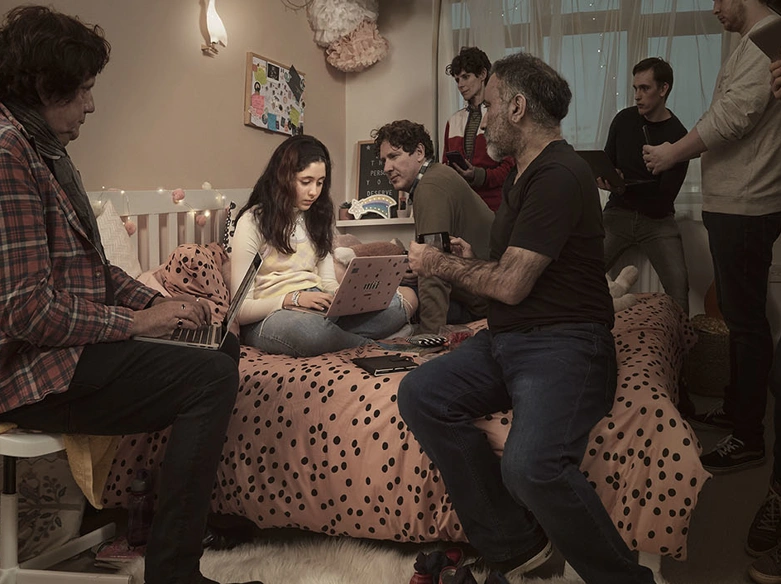
Online child sexual abuse prevention campaign
Young people are increasingly being groomed by online predators to create sexually explicit images and videos.
In 2021, we launched a prevention campaign to empower young people with online safety steps and encourage parents to start crucial conversations with their children. The campaign urged parents to TALK to their children using a practical resource and a powerful film that sparked debate.
With over 70 million impressions on social media and over 17 million video views worldwide, the campaign strengthened the public response and resilience to the threat of online child sexual abuse and exploitation. This is how, together, we worked to close the door to online child sexual abusers.
Any child, no matter what their background, with unrestricted access to internet-connected devices, is at risk.
In 2024, over 90% of the webpages assessed as illegal by our analysts contained coerced or exploited ‘self-generated’ child sexual abuse imagery. 94% of these so-called 'self-generated' reports showed only girls. Our analysts see how this most often affects children aged 13 down to 7.
The hard-hitting campaign, backed by the UK Home Office, Microsoft, TikTok, and supported by Snapchat and X aims to build resilience to the threat of 'self-generated' sexual abuse of children, thereby reducing the number of incidences.
We want young people to have an increased awareness of how to safely respond to requests online for sexual material, and for parents and carers to have an increased awareness of this crime and feel motivated and equipped to protect their children.
#HomeTruths

As part of the campaign, parents are encouraged to T.A.L.K to their children about the dangers.
- Talk to your child about online sexual abuse. Start the conversation – and listen to their concerns.
- Agree ground rules about the way you use technology as a family.
- Learn about the platforms and apps your child loves. Take an interest in their online life.
- Know how to use tools, apps and settings that can help to keep your child safe online.
Help us spread the word and close the door to online child sexual abusers. More info and resources available at talk.iwf.org.uk.
#GurlsOutLoud
We want to help young people recognise the actions of offenders and to be empowered to take control by rejecting these requests.
We’ve created a community for young people to feel supported and empowered and to share this with their friends.
We want them to remember these 3 simple steps to block out child sexual abuse: BLOCK. REPORT. TELL SOMEONE YOU TRUST.

We’re here to help young people spot the signs of online sexual abuse, and how to react if it happens. Because child sexual abuse is never the child’s fault.
Learn more about the movement at gurlsoutloud.com.
Maya’s story
Every day young people are contacted online by adults who try to manipulate or groom and sexually exploit them. Evidence suggests that young people with special educational needs or disabilities (SEND) can be more vulnerable to this type of online abuse and are more likely to experience online harm, including child sexual abuse.
Maya's story shows young people with SEND how to stay safe online and what to do if approached by adults online and asked for sexual images or videos.
Instead of responding and giving them attention, children are encouraged to tell someone they trust, who can help them block and report.
Our set of resources for parents, carers and teachers, specifically tackle the risk of online child sexual abuse of children with SEND. You can get a free copy of these resources, alongside a lesson plan to guide the viewing of Maya’s film at talk.iwf.org.uk/children-with-send.
Find out more about how you can keep young people safe at talk.iwf.org.uk. And check our latest campaign helping young people understand the harm of sharing explicit imagery online, and encouraging parents and educators to start crucial conversations, at thinkbeforeyoushare.org.
